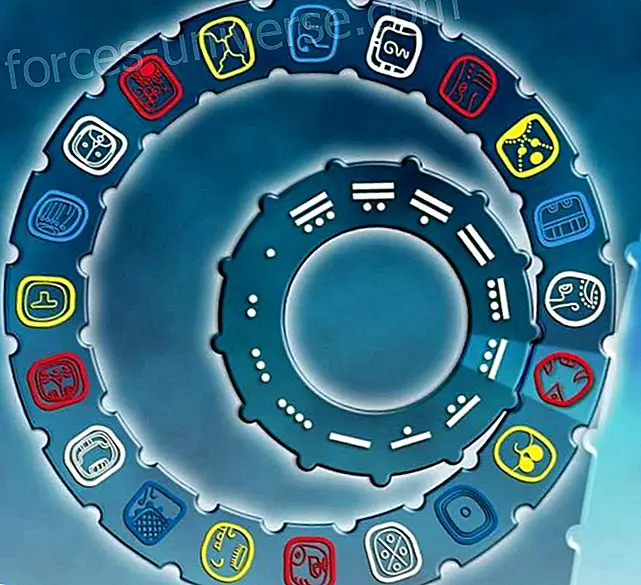Tibetan Astrology: Introduction, origins and influences of this fundamental science
- 2019
What do you know about Tibetan Astrology ? Where did it originate? I invite you to share with us this extraordinary knowledge, in addition, because you can apply this amazing wisdom to your life.
Tibetan Astrology: Introduction, origins and influences of this fundamental science

Tibetan astrology originated from several different traditions: Hindu, China, the local Bon religion and the Kalachakra Buddhist Tantra .
Traditionally, Tibetan astrology was one of the five secondary sciences in Tibet .
It refers not only to divination, but also used in the study of time cycles, Tibetan chronology and the compilation of the calendar.
The calendar in almanac remains important in the daily life of Tibetans to ensure that their daily activities are in tune with the cosmos .
In general, certain days of the week and month are considered correct for specific activities (from getting married to hanging prayer flags, even cutting your hair); but also, each day is related to the specific astrological chart of the day of birth.
Also the position of the planets and the cycles of the elements determine good or bad fortune.
In a Tibetan village, the astrologer would use his skills to advise people about almost everything: from the weather, the best time to harvest, check if they should and when two people should marry, even important business.
If the result were negative, religious practices would often be recommended to eliminate the obstacles, which would be carried out by the monks of the local monastery.
At the birth of a child, the tables would be reviewed to see if special rituals were required to avoid negative planetary influences .
He would also often prepare a death tablet to decide the exact performance of the funeral. Improper performance can result in problems for the family, and even for the deceased .
Tibetan astrology is not only strongly linked to religion, Tibetan doctors would also study astrology (and religious texts) to determine the timing of medication, etc.
Tibetan astrology ' Naktsi ' has mainly Chinese origins, and Tibetan astrology 'Kartsi' has Hindu origins.
Origin of the Tibetan "Anonymous Religion"
From the ancient 'anonymous religion' of Tibet, a system in current Tibetan astrology that relates to the Five Individual Forces (La - vitality, Sok - life potential, Lu - body health, Wangthang - personal power and Lungta - is preserved. wind horse) or energies within a person.
These energies are related to animals and Chinese elements, for example, the horse's strength is wood, etc. This system is exclusive to Tibet and is important for establishing annual horoscopes .
The La moves through the body in a monthly cycle, the Wangthang element is the same element that governs the year in Chinese astrology .
When the forces become weak, numerous specific practices are prescribed to strengthen the force again, from saving lives of animals to reciting mantras or performing special rituals such as exorcism.
Tibetan Astrology: Origin Bon

The Bon religion was well established in Tibet before the introduction of Buddhism. However, over the centuries, it seems that many Buddhist practices have taken root in Bon and vice versa.
For someone who is not very familiar with tunics, iconography or rituals, it can even be difficult to detect the difference.
Astrology is important within the Bon system. Methods for divination are given, to elude negative influences, astrological calculations and medical diagnosis .
The four types of astrological calculation systems according to David Snellgrove are:
- The mirror of the magic horoscopes
- The circle of Parkhas (trigrams) and Mewas ( magic squares in 9 colors ), of Chinese origin
- The Wheel of Time (Kalachakra) of the Elements.
- The Jushak method : calculation of interdependence.
A very important Bon deity is called Balchen Geko, who is said to govern time and the three worlds of existences . In this sense, the deity is analogous to Kalachakra in Buddhism.
The Tibetan astrology system works with a lunar year of 360 days and cycles of 60 and 180 years. As one year lasts more than 360 days, some days are doubled and others are omitted.
To make the calendar fit the observations, occasionally an additional month is even entered.
Tibetan Astrology: Chinese Origin
Concepts such as the Trigrams of the I Ching, the Nine Magic Squares or Mewas, the cycles of 12 and 60 years, the twelve Animals, the five elements and the duality of Yin and Yang, etc. originate from Chinese astronomy and astrology .
Traditional explanations say that Princess Kongyo introduced Chinese astrology in Tibet in 643, but it is very likely that there are much earlier influences.
Two main Tibetan systems are of Chinese origin: 'Naktsi' or ' black astrology ' (referring to the Tibetan name for China: ' black area '), and the ' astrology of the elements ' or ' Jungtsi'.
Five elements
 The five elements or Chinese agents are Wood, Fire, Earth, Metal and Water. They are different from the elements that make up the universe in Indian astrology : Earth, Water, Fire, Air and ether.
The five elements or Chinese agents are Wood, Fire, Earth, Metal and Water. They are different from the elements that make up the universe in Indian astrology : Earth, Water, Fire, Air and ether.
The Chinese elements are dynamic natural forces of transformation energies that constantly interact with each other.
Names do not relate directly to objects of the same name, but rather refer to affinities that can lead to positive, neutral and negative relationships.
Too much or too little of a specific element can become dangerous . They relate to an address and a time of the year .
Earth is associated with the periods around the end and the beginning of each season and is related to the intermediate directions (NE, SE, SO, NO).
Wood dominates in spring and east, Fire in summer and the south, Metal in autumn and the west, Water in winter and the north.
Each element has a specific relationship with an activity, color, planet, organ, etc. The elements have specific relationships with each other, which are described as Mother, Son, Friend and Enemy. They can also have a female or male polarity, similar to Yin and Yang .
Twelve Animals
The twelve animals: Rat, Ox, Tiger, Hare, Dragon, Snake, Horse, Sheep, Monkey, Bird, Dog and Pig are related to hours, days, months and years. Each animal is related to an element that represents its vital force, a direction, a specific sex and certain personality characteristics .
Animals can go together easily or hard on several levels.
Each year is a combination of an animal and an element . This leads to cycles of 12 x 5 = 60 years.
Nine mewas

The ' nine moles ' or ' nine islands of colors ' are derived from I Ching and Chinese numerology .
Each of the nine Mewas is related to a color, a direction and an element. For example, the three targets (1, 6 and 8) are metal. Every day, month and year, the Mewas move.
Eight Trigrams (Parkhas)
These represent the equivalent of Chinese P a-Kua, which forms the basis of the I Ching.
In turn, the pa-kua are based on the concept of Yin and Yang . They are: Fire, Earth, Metal, Sky, Water, Mountain, Wood and Wind. They are an extension of the Five Elements theory .
Tibetan Astrology: Hindu Origin
Tibetan astrology may have been influenced by Hindu sources as well as by Chinese sources.
Similarly to the previous one, India was known as " white area " and gave rise to the term " white astrology ".
The early Hindu civilization had much cultural exchange with the outside world, which is reflected in a zodiac identical to the Mesopotamians (twelve signs and twelve houses) and the extensive deanery.
Later, however, differences occurred, for example, when most of the other systems moved away from the early sidereal zodiac, which is preserved in the Hindu tradition.
Far back in history, Chinese and Hindu systems can also have common origins.
The similarities are, for example, the 28 Chinese lunar constellations and the 27 or 28 Hindu naksatras (of the Vedas), and the importance of the lunar nodes, Rahu and Ketu .
Signs of the zodiac
The Hindu system is based on the observation of the sun, the moon and the planets as in Western astrology. The sky at night appears as a balloon dotted with stars that surround the earth.
For a year, the sun moves along this expanse of stars and completes a cycle. This cycle is divided into 12 sections, called the zodiac signs.
Western astrology follows the cycles of the sun related to the seasons, and the Tibeto-Hindu system follows the cycles of the sun related to the stars, and there is a small difference between these two.
Over the centuries, a difference of almost a complete sign has accumulated. For the rest, the signs are the same as in the western system : Aries, Taurus, Gemini, Cancer, Leo, Virgo, Libra, Scorpio, Sagittarius, Capricorn, Aquarius and Pisces.
The general explanation of the signs is similar to the western system. Two main differences are the relationship with different parts of the body and the fact that the Hindu signs are divided into day and night signs (which indicates when their influence is strongest).
Lunar mansions
Hindi astrology mentions 27 lunar mansions (Naksatras), but since one of them comprises two adjacent constellations, it covers 28 constellations. Each of these mansions is related to a Hindu element (wind, fire, water, earth).
In the Tibetan system, lunar mansions have also been connected to the Chinese element and address.
The planets
Both the zodiac signs and the lunar mansions are ruled by a particular planet, in order: Ketu, Venus, Sun, Moon, Mars, Rahu, Jiteriter, Saturn, Mercury. (Ketu and Rahu are nodes of the moon .)
The rule of the planets about the signs is the same as in Western astrology.
Tibetan Astrology: Kalachakra

The Tantric Kalachakra system (Wheel of Time) contains not only an extensive system of religious practice, but also medical knowledge.
At the core of the system is the very familiar concept of 'as above, below', the correspondence of the outer universe with internal physical and mental processes in humans.
It describes the interaction of human and cosmic phenomena over time and builds a complete system of Hindu astrology.
Interestingly, this tradition contains all the elements of Hindu astrology, but it merges with Chinese principles.
The Tibetans began adopting the 60-year cycle in 1027, as taught in both Kalachakra tantra and Chinese tradition.
Tibetan Astrology: Buddhism
You could say that almost everything in Tibetan culture is strongly influenced by Buddhism. Even the myths have been 'budified' over the centuries.
In Tibet, a local astrologer would generally be a teacher (lama), either a monk or a layman. By living in a monastery, he would be responsible for setting the calendar for religious practices and festivals .
The following legend comes from ' Tibetan Astrology ' by Philippe Cornu . It is based on the manifestation of a Buddha called Manjushri, who is a personification of wisdom and perception.
Tibetan teachers invoke Manjushri at the beginning of any astrological mission.
“At the beginning of the current era or kalpa, while the future universe was still immense chaos, Manjushri caused a giant golden turtle to emerge from his own mind, and this turtle emerged from the waters of the primordial ocean.
Seeing in a dream that the universe in formation required a stable base, Manjushri crossed the turtle's flank with a golden arrow.
The injured animal turned on its back and sank into the ocean, producing blood and droppings, from which the constituent elements of the universe emerged.
The world created since then rested on the flat stomach of the turtle, on which Manjushri wrote all the secrets of the coming times in the form of sacred hieroglyphic signs . ”
Since Tibetan astrology is so directly related to religion, it is considered a practical method to reduce uncertainty and suffering .
The correct motivation of an astrologer is compassion (wanting others to be free from suffering) and, as such, an astrologer is no different from a spiritual practitioner, a doctor or a Buddhist teacher.
Author : Lucas, Editor and Translator of the Great Family of hermandadblanca.org
Image : 8 Directions & Elements, by Lena
Original URL : A View on Buddhism






